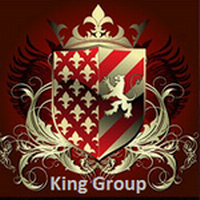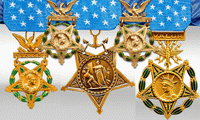WASHINGTON — Protesters clashed with police outside the White House Saturday, as tensions flared there for a second day after the killing of George Floyd, a black man who died in Minneapolis police custody this week after a white officer pinned him to the ground under his knee.

Protesters marched and chanted "No justice! No peace!" and "I can't breathe!" – a phrase Floyd was heard saying before his death – in Lafayette Square across the street from the White House and along surrounding streets. Sen. Kamala Harris, D-Calif., stood with peaceful protesters outside the White House during the afternoon.
Protesters stood facing a line of police wearing helmets and holding shields, the officers with their backs to the White House. At times, some protesters tried to knock over barriers or attacked officers around the White House perimeter, although none scaled the surrounding fence, according to the Secret Service. "Multiple" special agents and uniformed officers were injured when some protesters threw bricks, rocks, bottles and fireworks at officers, officials said.
President Donald Trump attended the historic SpaceX rocket launch in Florida during the afternoon, but was flying back by 6 p.m. He used an address at the Kennedy Space Center to offer a stern warning to "rioters, looters and anarchists" against violence.
"My administration will stop mob violence and we’ll stop it cold," Trump said, blaming violence in several cities on "radical left-wing" groups. "I will not allow angry mobs to dominate...It is essential that we protect the crown jewel of democracy: The rule of law."
Trump arrived at Joint Base Andrews shortly before 8 p.m. in his return to Washington.
The D.C. protests were part of many nationwide that erupted against police brutality and racial discrimination. At least two deaths were linked to demonstrations. Protesters set cars on fire, smashed windows and clashed with police officers dressed in riot gear in cities including Atlanta; New York; Chicago; Portland, Oregon; and Oakland, Calif.
Outside the White House, officers wearing plastic body shields charged and pushed back a crowd people of who had removed metal barriers set up on Pennsylvania Avenue. A police helicopter circled overhead. Videos from the scene appeared to show police firing pepper spray at demonstrators after asking them to move back. The smell of marijuana also hung in the air.
Six people were arrested near Lafayette Square on Friday and early Saturday, according to the Secret Service, which said it "respects the right to assemble, and we ask that individuals do so peacefully for the safety of all."
Although Secret Service agents and police carrying shields blocked off Lafayette Square north of the White House, drivers passing by honked in support of the protesters and some drivers raised their fists in the air in support. Some demonstrators held up signs that read: "Stop Murdering Black People" and "White Silence is Violence."
“I came here to enforce the Black Lives Matter movement and to get justice for the injustices we have been receiving for over hundreds of years," said Ariel Weems, a 16-year-old high school student from Bowie, Maryland.
She called Trump part of the problem.
“I don’t agree with any of his policies," Weems said. "His Twitter comments? Shooting and looting? That was absurd ... we’re out here protesting for our lives.”
People continued to join the crowd Saturday afternoon despite the 80-degree heat. Some people moved through the crowds, passing out bottles of water, and because of the ongoing coronavirus pandemic, masks were also distributed. Most of the demonstrators were wearing masks but were also fewer than six feet away from each other.
Jake Schindler, 26, was one of several people handing out water bottles to the crowd. As a white man, Schindler said his Christian faith “called him” to justice. After running by the protest earlier in the afternoon and seeing others giving out water, he came back with a case of water bottles to distribute.
James Bryant, a 30-year-old D.C. resident, said he felt “like he needed to show up as a black man in America.” The protests, he said, were part of a “collective anger” that Americans can't ignore.
Asked if he was worried about tensions between the crowd and the cordon of police, he shrugged and said, “they’re just people.”
By early evening, after clashes around 17th Street and Pennsylvania Avenue, some protesters marched to the National Museum of African American History and Culture. Along the route, a Wells Fargo bank branch had “capitalism is murder” painted on it, while references to the police and to Floyd were sprayed on the ground.
Corey Gwynn, a 27-year-old speech pathologist from Alexandria, Virginia, told USA TODAY she had joined the protest because she was “upset about the lack of equality,” especially as people had peacefully protested for so long “with no change.”
Asked what she thought of the protests around the country, some of which turned violent, she said she “can’t blame her brothers and sisters, but that’s not the way I’m going about it.”
“Merchandise can be replaced, but black lives can’t,” she said.
Floyd, 46, died Monday evening, shortly after video footage showed him handcuffed, gasping for air and saying "I can't breathe," as a white officer knelt on his neck for more than eight minutes. The video, taken by a bystander, circulated online and prompted widespread protests nationwide.
The Minneapolis Police Department fired four officers involved in the incident while state and federal authorities have launched investigations into the matter. Former Minneapolis police officer Derek Chauvin, who was seen kneeling on Floyd's neck, was arrested Friday and is facing third-degree murder and manslaughter charges. Subsequent charges are possible and charges for the other officers involved are anticipated, Hennepin County Attorney Mike Freeman said.


























